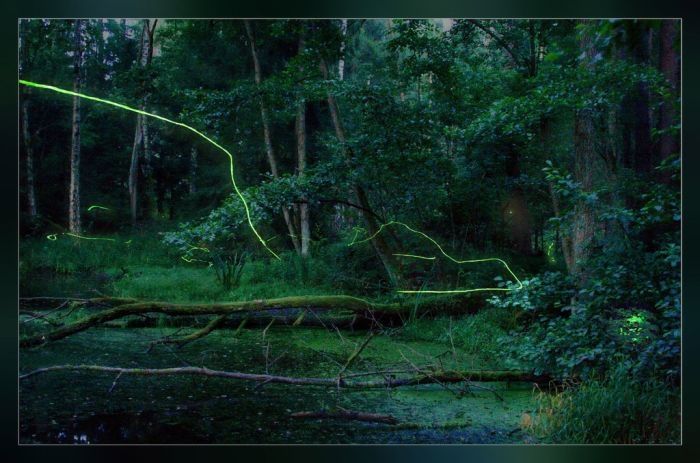|
|
Fireflies In The Night
|
Fireflies hibernate over winter during the larval stage, some species for several years. Some do this by burrowing underground, while others find places on or under the bark of trees. They emerge in the spring. After several weeks of feeding, they pupate for 1 to 2.5 weeks and emerge as adults. The larvae of most species are specialized predators and feed on other larvae, terrestrial snails, and slugs. Some are so specialized that they have grooved mandibles which deliver digestive fluids directly to their prey. Adult diet varies. Some are predatory, while others feed on plant pollen or nectar. Most fireflies are quite distasteful and sometimes poisonous to vertebrate predators. This is due at least in part to a group of steroid pyrones known as lucibufagins (LBGs), which are similar to cardiotonic bufadienolides found in some poisonous toads.
Light production in fireflies is due to a type of chemical reaction called bioluminescence. This process occurs in specialised light-emitting organs, usually on a firefly's lower abdomen. The enzyme luciferase acts on the luciferin, in the presence of magnesium ions, ATP, and oxygen to produce light. Genes coding for these substances have been inserted into many different organisms. Firefly luciferase is used in forensics, and the enzyme has medical uses - particularly for detecting the presence of ATP or magnesium. Renaissance painters used a powder of dried fireflies to create a photosensitive mixture. Caravaggio may have used this powder in his uniquely lit paintings. All fireflies glow as larvae. Bioluminescence serves a different function in lampyrid larvae than it does in adults. It appears to be a warning signal to predators, since many firefly larvae contain chemicals that are distasteful or toxic.
|
|









